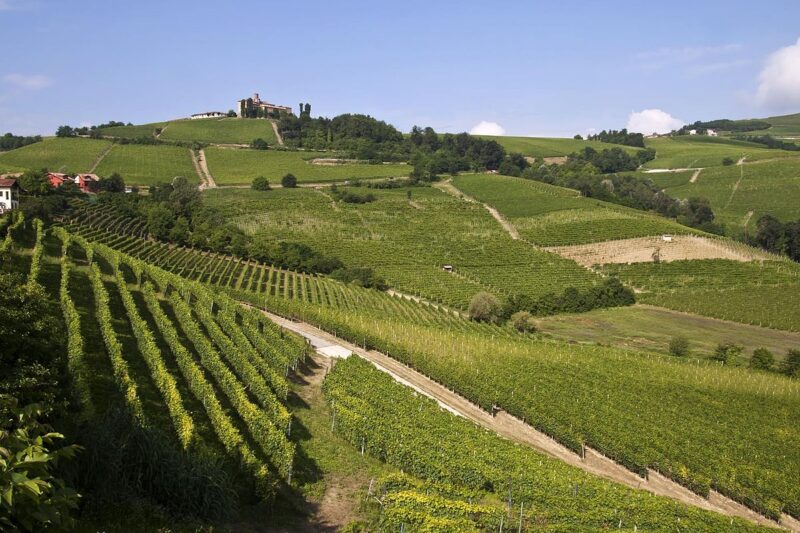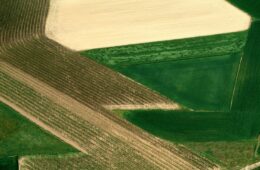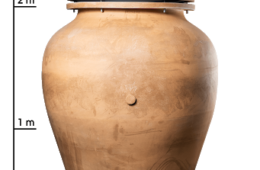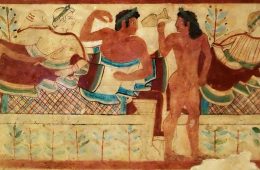THE BEAUTY OF OUR COUNTRY ACCORDING TO PROFESSOR LUIGI MOIO

Professor Moio, do you share the idea that Italian landscapes were also shaped by vineyards?
Viticulture has made a very important contribution in shaping the Italian landscape. We have an incredible variety of climatic conditions, from the Alps to Sicily. With an enormous range of geographical contexts and soils ranging from limestone to volcanic soils, to those with rocky clay. There is every possible variety and a large number of vines have adapted to these different realities. The French ampelographic platform, on the other hand, rests on ten to a maximum of twelve vines, which are then to be found all over the world and thus became the so-called “international vines”. We have many more and all are exclusive to our country.
How would you define our country?
I would say that Italy is an open-air museum of vines and farming systems. Man had to adapt to each area. There are areas with “pergola” terraces, flatter areas with a sapling system, hills with row systems such as “guyot” and limestone spurs. These days we should use this moment of isolation to reflect on how beautiful our Peninsula is. Everyone has always wanted to travel abroad, to take airplanes, thereby often neglecting our own country which, as we all know, is the most beautiful in the world.
Does wine therefore represent beauty?
Italy is a country of absolute beauty, of harmony. Just think of the Sistine Chapel, Michelangelo, Leonardo, Botticelli, as well as cities, villages, mountains, hills, coasts. The world of wine reflects this beauty, which is sometimes envied abroad. The charm of wine also exists in its variability: there are actually no comparable wines, which are similar to each other. They are related to different contexts, but also to the richness of Italian food. Our gastronomy has different and special characteristics throughout the country and wine becomes essential, since there is no doubt that no other alcoholic beverage in the world goes so perfectly with food. Wine is an absolute paradigm of diversity, or rather of biodiversity, and many wine lovers are probably attracted by it being “anti-standard”, in an increasingly uniform and globalized world.
Which are your favourite wine territories?
Italy as a land of wine is all beautiful, from North to South. It is undeniable that some regions, over the years, have become a sort of “visiting card”, such as Piedmont and Tuscany, as well as Veneto, Trentino and Alto Adige. Nevertheless, aside from these regions which are already very famous, there is much more worth visiting. I’d like to invite you to go to the Centre and South of Italy, starting from Umbria, Abruzzo, Lazio, Marche with its Verdicchio wine, Campania which in recent years has produced very good white wines, with three varieties: Fiano, Greco and Falanghina. Not to mention Puglia, Basilicata, Calabria, Sicily and Sardinia. Italy is truly incredible. In France, wine can only be produced in a few areas, while in Italy it can be planted anywhere. And not only grapes. It is a country that offers the perfect climate for high quality agriculture. And all Italian agriculture, once the present crisis is over, should really receive more attention from our national political programmes.
Is there a link between wine and the beauty of the area?
Yes. This is especially true for top quality wine. A great wine is a 360-degree aesthetic project. The emotional aspects becomes essential in evaluating a wine, in addition to some minimum requirements such as the harmony of its taste; furthermore, there should be no olfactory deviation. So a high-quality wine becomes even better in a beautiful landscape. Basically, factors related to neuroscience and the emotional world are involved.
So what is beautiful can also become good?
Exactly. I’ll give you a personal example. In recent years, I have traveled a lot by train to present my book, “Il Respiro del vino”. During my trips, while looking out of the window, I usually listen to classical music on headphones, and I have noticed that some territories are quite neglected. However, I found that the vision of a not very pleasant landscape became more tolerable when I had beautiful music in my ears.
Does beauty influence other sensory aspects?
Of course. A beautiful cellar surrounded by a beautiful landscape prepares the mind to make a positive judgment. The masters in this respect are the French with their Chateaux de Bordeaux; they pay attention to the smallest details. The Chateau, which is a beautiful representative residence, surrounded by vineyards treated as gardens, creates a context that conveys pleasure and tranquility, becoming a formidable amplifier of the beauty of wine.
Can the memory of a landscape also prepare the mind to a positive judgment?
This is another important aspect and is one of the reasons why wine territories should be visited more often. If I taste a wine in a beautiful place, I will remember that wine and that territory. Wine makes us travel virtually, and reminds us of certain places. By uncorking a Napa Valley wine, I immediately think of California. At the same time, those who are in California, taste a wine from Irpinia and have been there, will think about the producers and men who work there. It is therefore essential to see what is behind a bottle: the landscape, the vineyards, the cellar, the men and the emotions left by the people you meet. All this must be shown, described and told to consumers with kindness, extreme simplicity and authenticity.
Stefano Borrelli
ARTICOLO TRATTO DA ” Il Sommelier Magazine“


